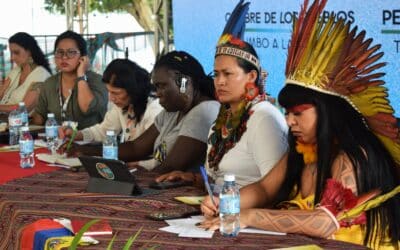Cumbre de los Pueblos: Tribunal en defensa de los cuerpos y territorios de las mujeres y disidencias sexuales y de género
Por: Articulación de Mujeres Brasileñas (AMB) y la Coalición Mundial por los Bosques (GFC) Fotos: Pilar Anco/CMP Flora Tristán y Fran Ribeiro/SOS Corpo El jueves, 13 de noviembre, la Coalición Mundial por los Bosques (GFC), la Articulación de Mujeres Brasileñas (AMB),...




